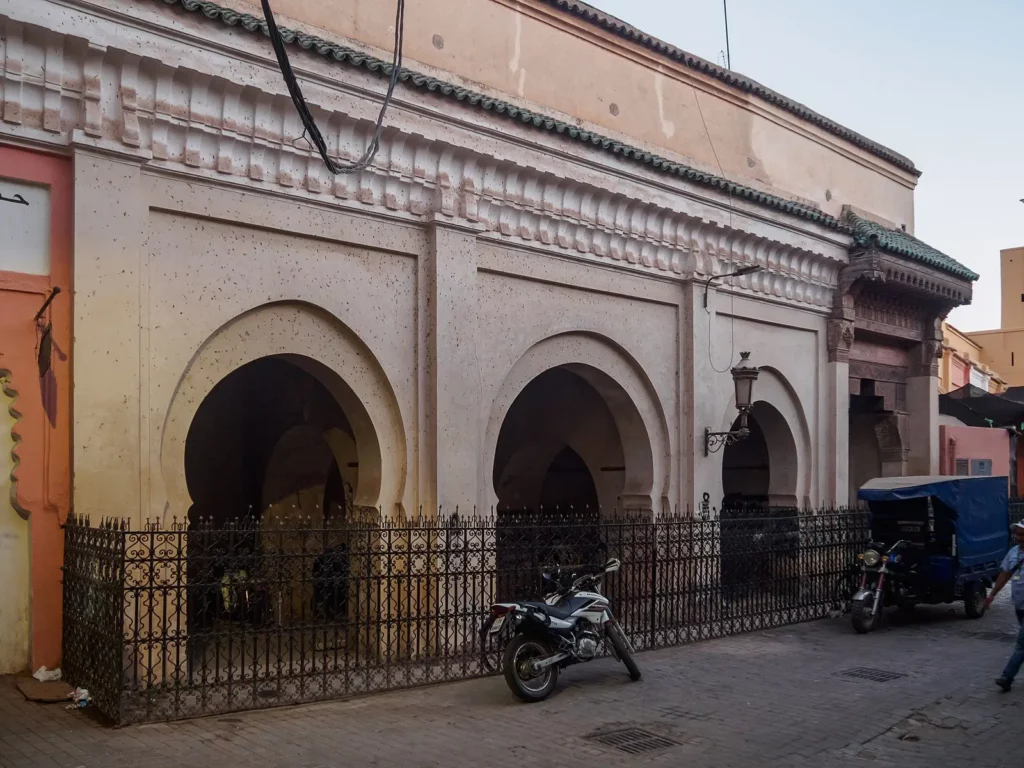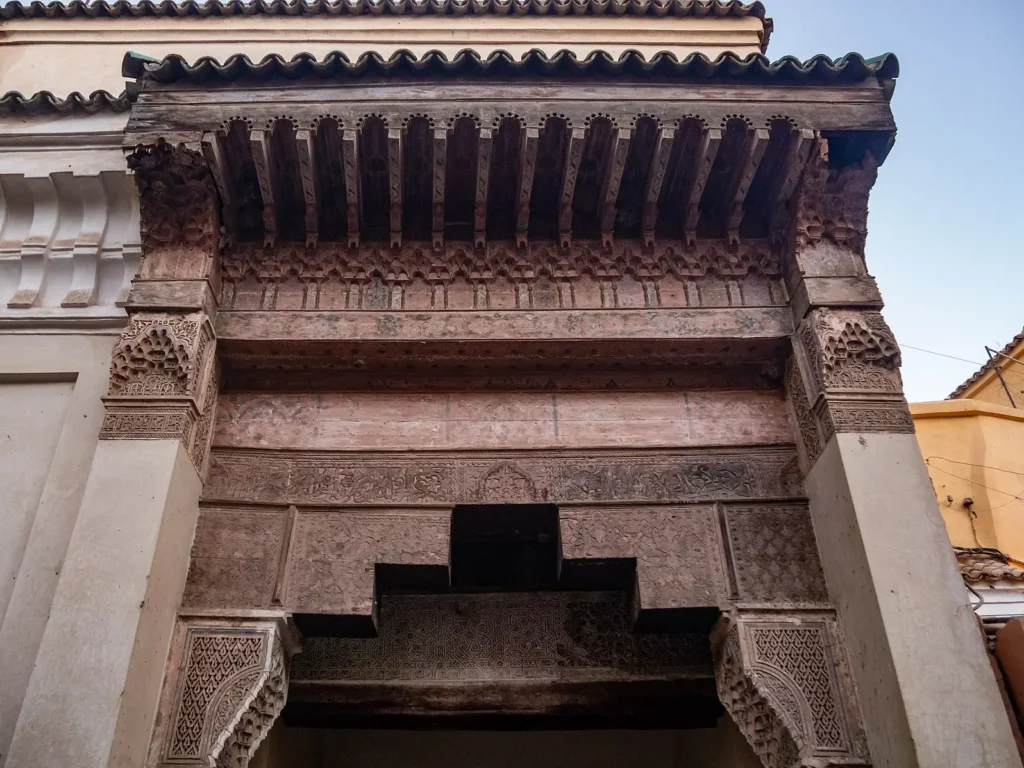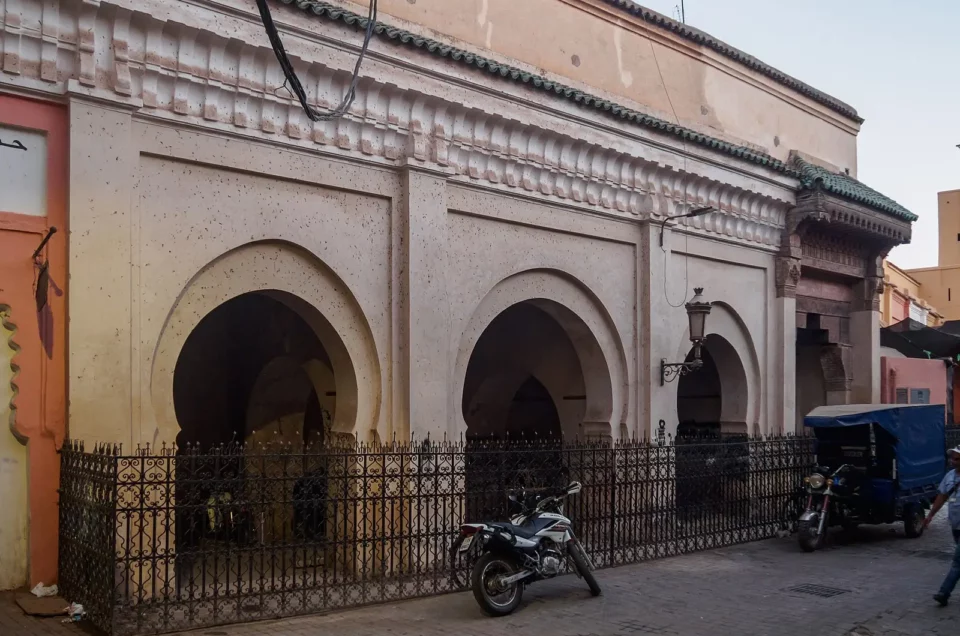Mouassine Fountain is one of the oldest and most beautiful fountains in Marrakech, Morocco. It was built in the 16th century by the Saadian sultan Ahmed al-Mansur as part of a larger complex that included a mosque, a library, a hammam and a madrasa. The fountain is located in the Mouassine district, which is part of the historic medina of Marrakech.
The History of Mouassine Fountain

The fountain was constructed during the Saadian dynasty, which ruled Morocco from 1549 to 1659. The Saadians were known for their patronage of arts and sciences, as well as their military conquests and diplomacy. They transformed Marrakech into a thriving and cosmopolitan city, attracting scholars, merchants, craftsmen and travelers from different regions and cultures.
The fountain was part of a larger project to renovate and beautify the Mouassine district, which was one of the oldest and most important areas of the city. The project also included building a mosque, a library, a hammam and a madrasa, which formed a harmonious and integrated complex. The fountain served as a source of water for drinking, washing and ablutions for the locals and visitors. It also served as a meeting place and a social hub for people from different backgrounds and professions.
The Architecture and Ornamentation of Mouassine Fountain

The fountain is a masterpiece of Moroccan architecture and craftsmanship. It is made of carved cedar wood and zellij tiles that form geometric and floral patterns. The fountain has three sides, each with a different inscription in Arabic calligraphy. The inscriptions praise Allah, the Prophet Muhammad and the sultan. The fountain also has a large basin that collects water from an underground source.
The fountain reflects the artistic and religious influences of the Saadian dynasty, which combined elements from various styles and traditions. The fountain shows the influence of Andalusian art, which was brought by the Saadians from Spain after they conquered it in 1492. The fountain also shows the influence of Ottoman art, which was introduced by the Saadians after they established diplomatic relations with the Ottoman Empire in 1554.
How to Visit Mouassine Fountain
If you want to visit Mouassine Fountain, here are some tips and recommendations:
- The fountain is open to the public every day from sunrise to sunset. There is no entrance fee, but you can make a donation to support its maintenance and preservation.
- The fountain is located in the heart of the medina, which is a maze of narrow streets and alleys. You can either walk or take a taxi to get there. If you walk, you can enjoy the sights and sounds of the souks, which are traditional markets that sell everything from spices and carpets to leather goods and pottery. If you take a taxi, make sure to agree on the fare before you get in.
- The fountain is surrounded by other historical and cultural attractions that you can explore. You can visit the Mouassine Mosque, which is one of the largest and oldest mosques in Marrakech. You can also visit the Mouassine Library, which houses a collection of rare manuscripts and books on various subjects. You can also visit the Mouassine Hammam, which is a traditional bathhouse where you can relax and enjoy a massage.
- The fountain is also close to some popular cafes and restaurants where you can taste the local cuisine and drinks. You can try some tagine, which is a stew cooked in a clay pot with meat, vegetables and spices. You can also try some mint tea, which is a refreshing drink made with green tea, mint leaves and sugar.
Why You Should Visit Mouassine Fountain
Mouassine Fountain is more than just a source of water. It is a source of culture and history. It represents the legacy of the Saadian dynasty, which shaped Morocco’s identity and destiny. It also represents the social and urban life of Marrakech, which was a vibrant and diverse city during the Saadian era. By visiting Mouassine Fountain, you will discover a historic and cultural gem that will enrich your experience in Marrakech.

